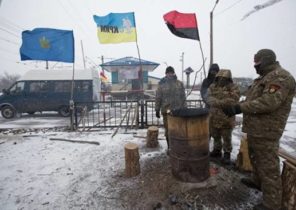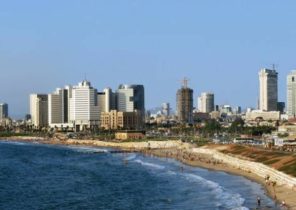The energy strategy of Russia until 2035 only slightly corrects the main directions of development of the Russian energy sector. The appearance of the document will not lead to significant changes in the model of its functioning: the dominant position in the energy sector will continue to take several major players received preferential treatment from the authorities. Energy will continue to be a tool of Moscow’s foreign policy.
The strategy as a document
New version of Energy strategy of Russia until 2035 prepared an extremely long time — six years. Its first draft appeared at the beginning of 2014. Rapid changes in energy markets and unstable political situation forced repeatedly to defer completion of the document.
Strategic concept, designed for such a long period of time (next 15 years), by definition, can not be too rigid in terms of specific indicators. It comes from the rather optimistic assumption that the average rate of economic growth of Russia in the years 2020-2035 will range from 2.3% to 3%. This and many other reasons (political and economic instability in the world, pandemic and so on) are inclined to approach presented in the Strategy statements with some skepticism. The information contained therein should be perceived as an attempt of the Kremlin to outline plans and identify key trends. In addition, it would be a mistake to consider it in isolation from other Russian documents and the main directions of Russian policy, the change of which nothing portends.
The strategy is a lengthy document that is difficult to analyze in a short article, so we will focus on its individual aspects and main ideas.
Gazprom: the immortal myth of “national treasure”
The strategy indicates plans for the preservation of the monopoly on the export of “conventional gas” (for pipelines) in the hands of Gazprom. The document, however, there is mention of access to the market of other companies, however, we are talking only about activities in the framework of the export channel of the above-mentioned concern. This hints at the fact that it is starting to consider the prospect of circumvention of the norms of the Third energy package of the EU with the help of transmission part of the export capacities of alternative suppliers. While Gazprom will remain the “Apple of his eye” and the Kremlin will not lose the status of special care surrounded by “national heritage”.
From the data contained in the Strategy should be that Gazprom has no plans to create new export routes. On the basis of the existing transportation capacities and forecasts that relate demand to supply via pipelines of Russian gas, it can be concluded that the Ukrainian route is saved. Export plans involve increasing the volume of supply to the level 255,4-300 billion cubic meters per year, and transport capacity without the Ukrainian direction amount to 290 billion cubic meters. From this forecast we should not draw far-reaching conclusions, whereas in the past data contained in the Russian strategies described are likely not real and the ideal state of Affairs. The numbers in the export forecast looks too high. In the last two years, these figures stabilized at 200 billion cubic meters, and the current sharp decline in exports.
It should be noted that Gazprom has expanded the list of options for the possible development of events. If he had considered the prospect of the Ukrainian route only as playing a minor role (about 10 billion cubic meters of gas a year), now does not change the scenario in which the volume of supply at Ukrainian gas transportation system can be greatly increased.
Rosneft: old friendship does not rust
The Strategy emphasises the importance of oil for the Russian economy. Oil lobbyists, we are talking primarily about Rosneft, Igor Sechin, was able to achieve the appearance of the document relevant to their interests provisions that will ensure the above concern support and perpetuate an archaic model of the development of the sector. “The transformation of the tax system”, “comprehensive encourage the development of “Mature” fields”, “smoothing of sharp fluctuations of prices” — one has to these statements indicate that the government will continue to help businesses operating in the oil sector, and to go to manual control the market.
It is clearly seen that the Kremlin is ready to patch financial holes, which on the background of current trends in the oil market tend to increase. The Strategy generally used the most common definition, so it doesn’t say what specific preferences to the oil industry, however, it is obvious that the appetites of Rosneft will be satisfied. How — a question of technique and imagination Sechin, whose old friendship with Putin will not rust.
LNG priority
The Kremlin expects Russia will take the position of one of the global leaders in the liquefied natural gas markets, bringing the total production up to 80-140 million tons. The range of numbers indicates a hazard identified in the Strategy plans. In their reality all the more possible to doubt, if we remember that in 2019 the Russians have made only 28-29 million tons of LNG. If the plan, at least more effort can be realized even theoretically, any other predictions are an attempt to wishful thinking.
Strategy, meanwhile, clearly demonstrates that Moscow has assessed the value of LNG and see the development of this segment as a factor that threatens its position in the global energy markets, and new opportunities. At the same time significantly that the companies “NOVATEK” successfully promote their interests. From the strategy of providing new infrastructure and the formation of an LNG cluster, it follows that the company will further strengthen its position.
Who is not with us is against us
The basic essence of the document reflects the fragments, devoted to the conceptual and doctrinal issues. On the one hand, the new Strategy is written in a much smoother language than its previous version, or draft version, published after 2014. It’s a more subtle document, creating the impression that the Russian vision of the long-term prospects of the sector has changed. One of the characteristics of the new Strategy — taking into account fluctuations due to the international political, economic and social situation. Another innovation is the statement that the Western sanctions against Russian companies, including those working in the energy industry in the near future will not be canceled. In the text there was even a place for mention of the impact of the pandemic coronavirus that indicates the “freshness” of the document. However, other elements are inclined to consider timid omens of change is not too successful fraud.
First, it’s archaic perception of the world and the place of Russian energy in it. Strategy and approved by presidential decree in may 2019, the energy security Doctrine of the Russian Federation (in a new document from it completely moved some of the paragraphs) traditional for the Kremlin to define the main threats.
The expert of the Jamestown Foundation Sergey Sukonkin identifies five phenomena presented by the Russian authorities threat: globalization, rapid technology development, growing competition, prospects of “green energy” and “artificial” methods of competition, including sanctions. The analyst notes that only one of these positions can be loosely regarded as a threat. We are talking about the sanctions: they’ve certainly become Russia’s problem, however, its root is in any case is in the Kremlin. If Moscow is really going to change their approach to energy development, all other phenomena it could not find it threatening, but on the contrary, factors that offer new opportunities.
The second aspect is contained in the text forecasts for the increase of transparency and internal competition. They are at odds with the new and gaining momentum for the process of increasing the volume of subsidies and the allocation of huge funds for individual projects, the principles of selection which is shrouded in mystery.
If we experience increased competition, it is likely, in the form of aggravation of ruthless backroom battles over access to the diminishing cake, dividing that Russian corporations will deal each other blows.
Thirdly, the document captures the words “technology”, “ecology”, “innovation”, however, does not describe mechanisms that would allow to implement related ideas into practice. The Russian case clearly indicate that except for a few projects, illuminating media, we are dealing with a deepening technological gap and fixing an extensive approach in the energy sector, which relies on the principle of “maximum income in the shortest possible time.”
Last year’s accident at the oil pipeline or the recent environmental disaster in Norilsk, when the river hit 20 thousand tons of petroleum products are just a few most publicized event demonstrating the state of the Russian energy concern of the Russians about the environment and the pace of introduction of modern technologies. The declared policy of import substitution will only encourage stagnation.
Expert information and consulting company “Rusenerdzhi” Mikhail Krutikhin in an interview with the Agency “Rosbalt” describes the Kremlin’s vision of energy sector development in the following way: “Russia insists that it will continue to sell worldwide oil, gas and coal, and all that hinders this goal, for it is a threat and challenge”.
Energy cannot be viewed in isolation from other ongoing in Russia, moreover that it was and remains an important element of the Russian state colossus, and she did not even think about the refusal of the previous aggressive vector. In the documentary “the Kremlin. Russia. Putin”, which aired on 21 June the TV channel “Russia 1”, the Russian President once again reminded about their intention to change the existing world order. “The question arises: what if one or the other Republic became part of the Soviet Union, but got to your “baggage” huge number of Russian lands, the traditional Russian historical territories, and then suddenly decided to secede from the Union. Well, at least then went with what came, and not dragged to a “gift” from the Russian people,” he mused.
The statement of Putin clearly shows how the long-term priorities will be subordinated to the implementation of the objectives of the Energy strategy and other documents on development. His words speak about the real intentions of the Kremlin much more than teeming with beautiful language, 93 pages Strategy. The published document is nothing more than an attempt to paint the shoddy paint the concrete structure, which as a result of this procedure, not in the least change its properties.







